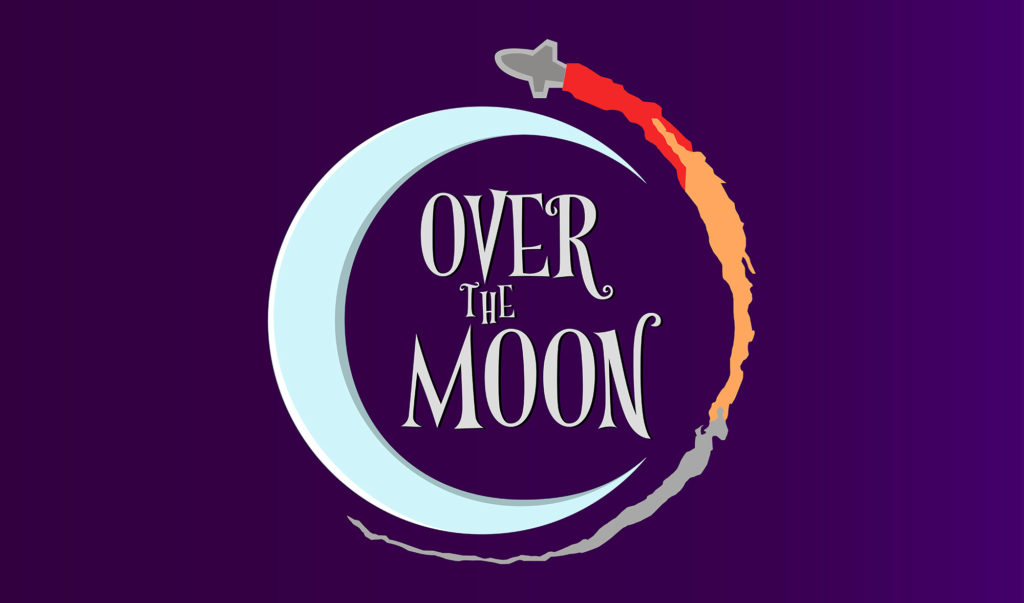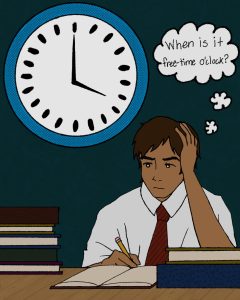‘Over the Moon’ Review: A Tale of Love, Loss and Culture

“Over the Moon” is a movie that uses a beautiful blend of art, music, science and mythology to tell a story that focuses on loss, grief and moving on. The protagonist is a girl named Fei Fei. An extremely intelligent girl with a fascination with the moon. This stems from the stories her mother would tell her as a child. Her favorite story being of Chang’e, the moon goddess. It is the tragic tale of two lovers, where on one quiet night bandits invade the home of Chang’e and her lover. In possession of two immortality pills, Chang’e drinks both pills to keep them out of the evil clutches of bandits. By drinking the pills, she becomes a goddess but because she is a goddess, she can no longer stay on Earth. She floats all the way to the moon and away from her lover, Hou Yi, with only the Jade Rabbit to keep her company. It is said that Chang’e is still waiting for the day Hou Yi will join her. This tale becomes the backbone of the entire plot.
Fei Fei has an extremely close bond with her family and when her mother dies, it is just her and her father. She acts strong for her father and seems to handle the death of her mother well. That is, until her father introduces her to Mrs. Zhong. She is immediately wary of her and gets an inkling of the relationship of Mrs. Zhong and her father as she watches the two interact. This is the scene where she also meets Chin, a small boy who is very energetic and believes he can walk through walls. Fei Fei is instantly annoyed by him and shows a hostile attitude to both Mrs. Zhong and Chin. When she finds out that her father plans on remarrying, she storms off. She clings on to the memories of her mother and feels that her father remarrying means that he has forgotten her and the love they shared. In a desperate attempt to stop the marriage and remind her father of his “true love”, she plans to build a rocket to the moon and prove that Chang’e is real, just like her mother said.
When she arrives at Lunaria, the city Chang’e has built, she quickly realizes things are not as simple as they seem. Chang’e is nothing like her mother told her. Instead of a kind and gentle goddess, she is met with someone who is very narcissistic and manipulative. Chang’e tells Fei Fei that in order to bring back a picture of her, she must bring back “the gift”. The gift is the missing piece she needs to bring Hou Yi back and she’s running out of time. When the moon dust runs out, she loses her chance of ever seeing him again. The problem is that Fei Fei has no idea what the gift is, let alone where to find it. So, she goes on a journey to find the gift but along the way, she learns how to finally face the feelings of loss and mourning caused by her own mother’s death and move on.
The movie was released on Oct. 23 on Netflix. The film was directed by Glen Keane and John Kahrs. Both notable members in the animation community, Keane was a character animator for Walt Disney. He worked on movies such as the “Little Mermaid,” “Aladdin” and “Beauty and the Beast.” Kahrs also worked on popular and beloved movies such as “Tangled,” “The Incredibles” and “Monsters Inc.” Similar to these movies, “Over the Moon” has a deeper and more emotional meaning but is conveyed through vibrant colors, upbeat songs, light-hearted jokes and references. While their styles are reflected in the movie, the person who wrote it was Audrey Wells.
Parallel to Keane and Kahrs, Wells has several notable movies under her belt such as “George of the Jungle”, “Under the Tuscan Sun”, “Guinevere”, and “The Hate U Give”. Wells died in 2018 after battling cancer and Gennie Rim, producer for “Over the Moon,” said in an interview with Vanity that the movie “was a love letter to her daughter and for her husband.”
This is exactly what the movie achieves. The story beautifully shows two characters, one mourning the loss of her mother while the other is mourning the loss of her lover. Coming from, quite literally, two different worlds, we see the dynamic between Fei Fei and Chang’e. Fei Fei is an average young girl while Chang’e is a goddess but the two recognize each other’s pain. They understand what it is like to lose someone you hold dear and help each other move on. The story of embracing pain and allowing love in is something Wells really emphasized.
Wells told Rim, “All of my movies are about healing. And this is no different. This, if anything, is the most important job I’ve ever done.”
Aside from the emotional meaning of “Over the Moon,” another reason that the movie gained popularity so quickly is the accurate Chinese representation in the film. With how heavily the movie is centered in emotions and family dynamic, Peilin Chou, who produced the film alongside Rim, spoke in an interview with NBC about the importance of “depicting emotions through an Asian lens” and making sure the “depictions of love didn’t default to the Western expressions people typically expect to see in Hollywood movies.”
Many Asians can spot how the culture typically shows love within scenes of the film. An example would be how Fei Fei and her father never explicitly said “I love you” to one another, yet clearly show a deep bond between them. Another, more comical example, would be Fei Fei’s grandmother feeding her and commenting on how she was so skinny and needed to eat more. Being Asian myself, I can attest to the accuracy of how members of “Over the Moon” depicted affection in the Asian community. It is common to express one’s love with actions and acts of kindness rather than through words and open displays of affection. I still have memories of my grandfather, who is not fond of hugs in public but would wake up early during the rainy season to heat up some water for my bath before I go to school.
There are so many things to talk about with “Over the Moon.” I can write a whole essay on the soundtrack alone. The music was a mix of traditional Chinese music and more modern songs, while also still using traditional Chinese instruments such as the xiao, a Chinese vertical flute. It is also fun to see the more subtle references to Chinese culture such as the family-style meals, games like ping-pong and mahjong, and cute chow chows. If you are into art, the film truly emphasizes the use of light and colors while also mixing modern animation with traditional Chinese art. Fashion also becomes an interesting subject because Guo Pei, a Chinese fashion designer, designed all of Chang’e’s clothing. She used cranes, which are popular in Chinese folklore, and other designs on the royal robes to tell the tale of Chang’e and Hou Yi. So, there are a lot of different topics that make “Over the Moon” such a great film. I suggest watching the movie on Netflix and seeing what captures your attention.







